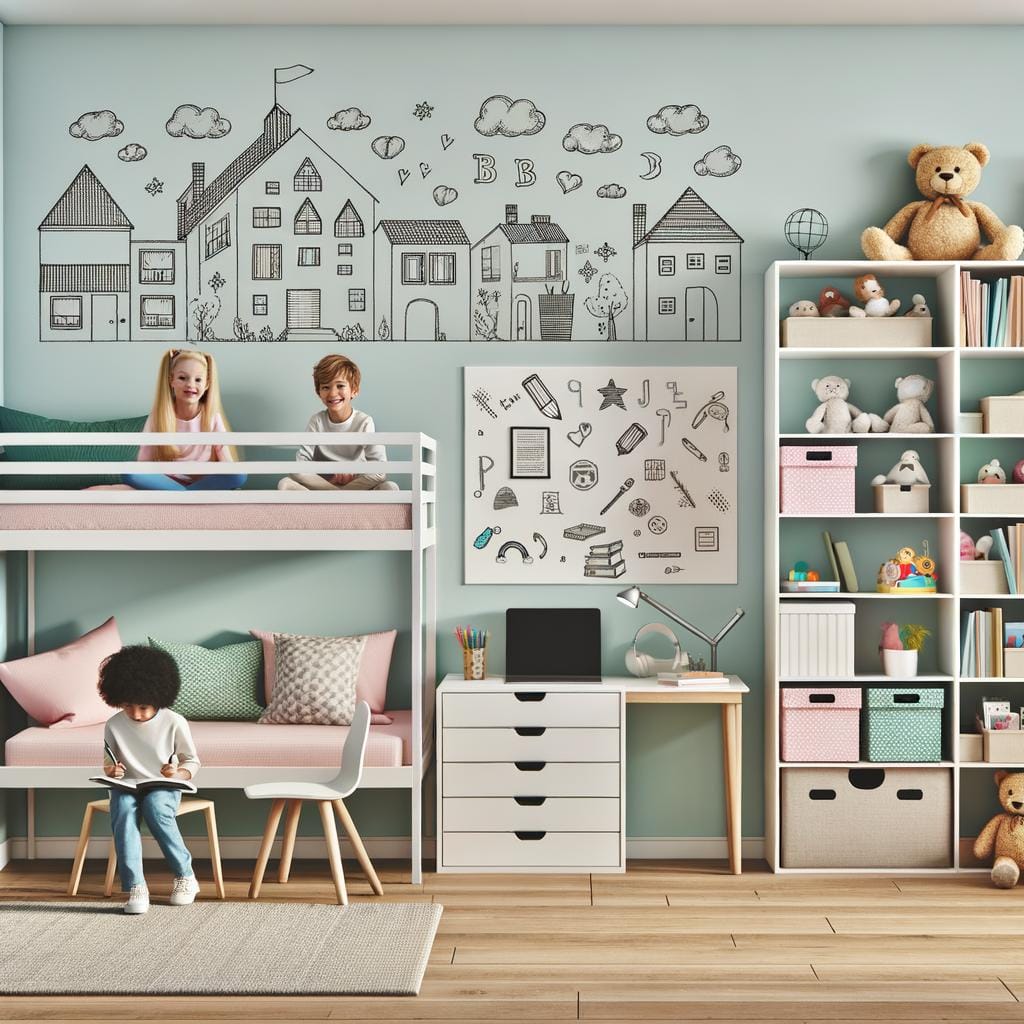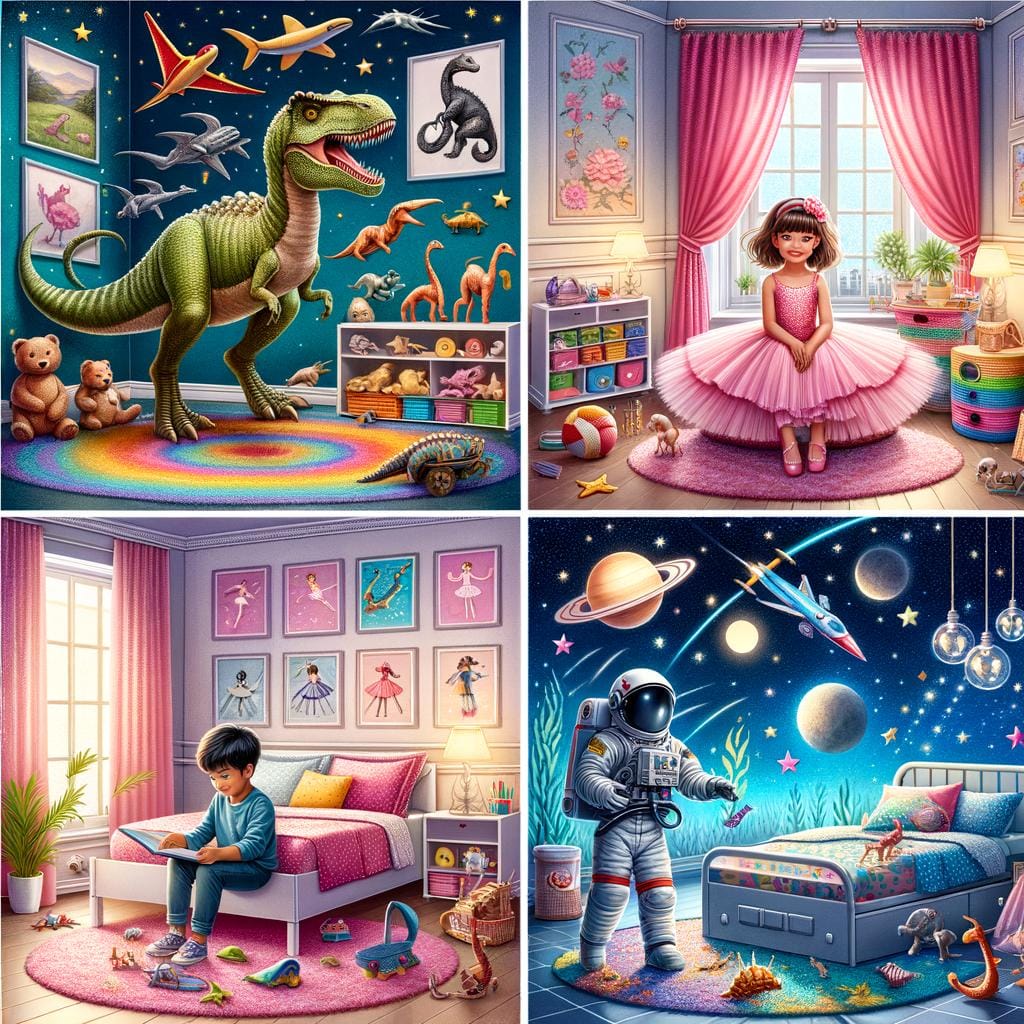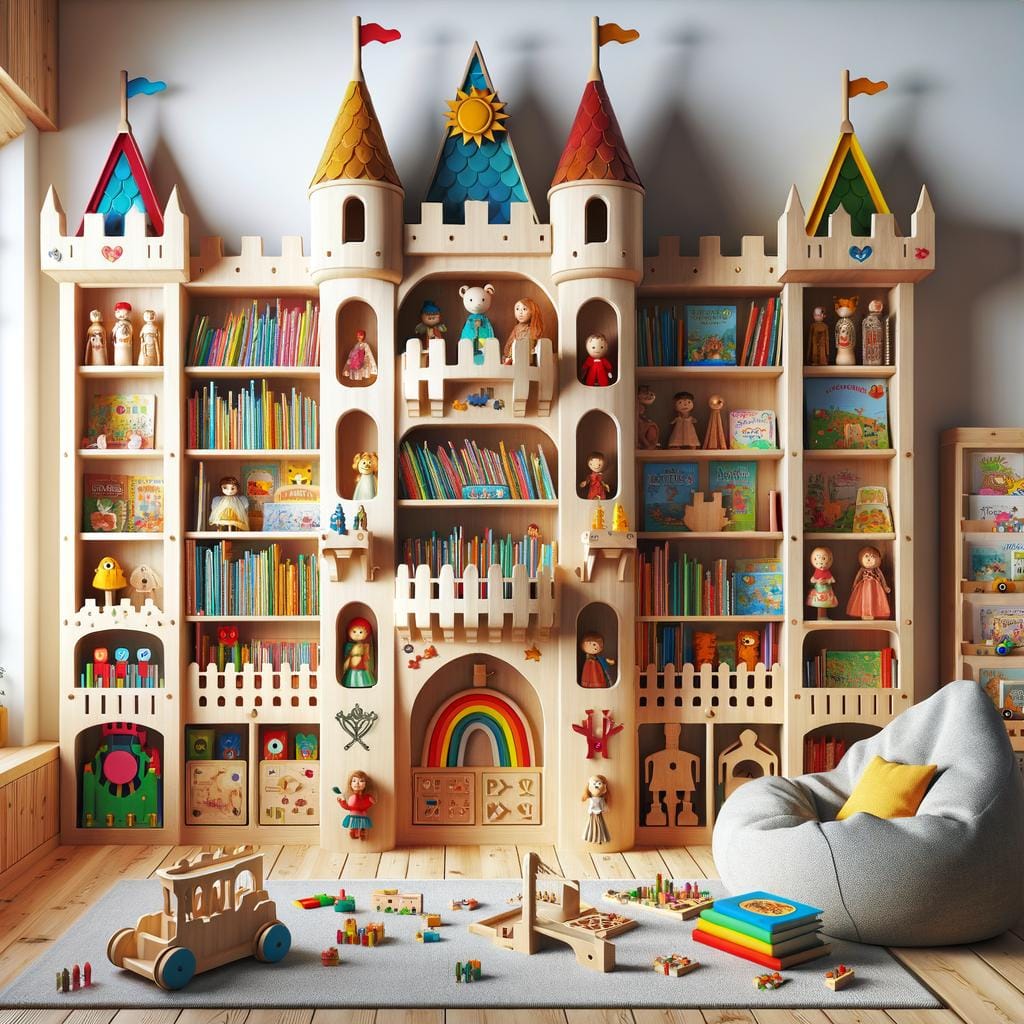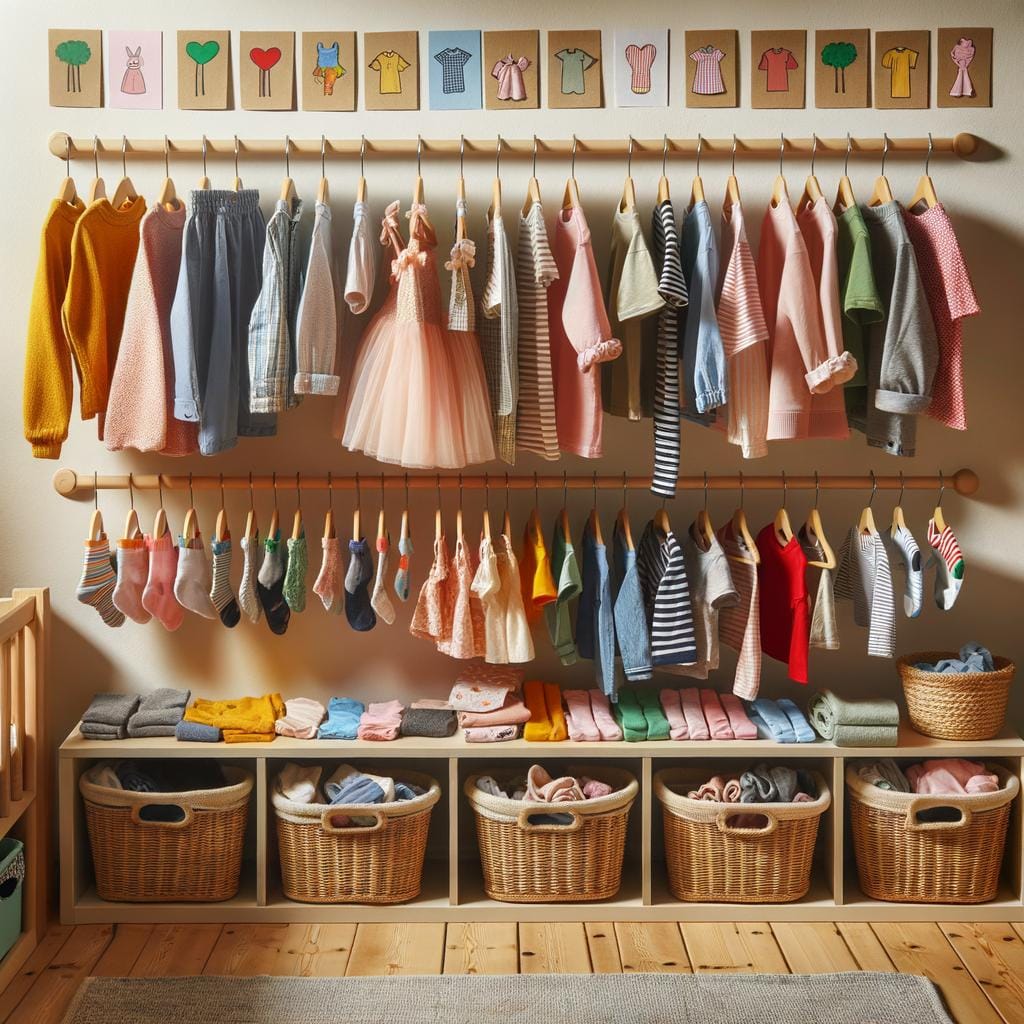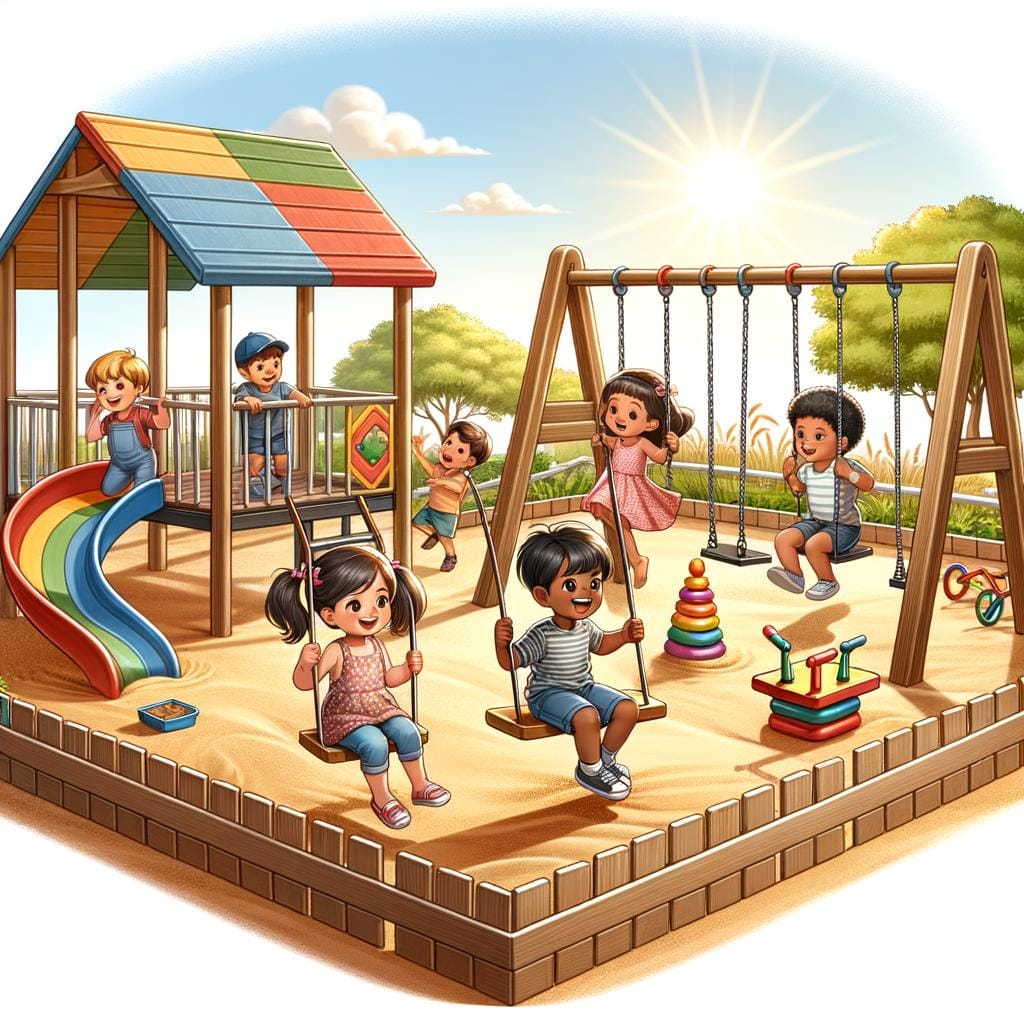Creating a functional and organized space for kids is essential in fostering their independence and creativity. One of the key aspects to consider in designing a child’s room is space utilization.
Efficiently utilizing the limited space available can make a significant difference in how the room functions and how comfortable it is for your child. From clever storage solutions to ensuring there is ample room for play and study areas, every element plays a crucial role in maximizing the potential of the space.
When it comes to kids’ rooms, optimizing space goes beyond just aesthetics. It directly impacts their ability to learn, play, and rest comfortably. By focusing on creating a well-organized and clutter-free environment, you can help promote a sense of calmness and productivity for your child. This article explores various strategies to enhance space utilization in kids’ rooms, offering practical tips and creative ideas to make the most out of every corner.
From innovative storage solutions for toys and clothes to furniture ideas that save floor space, there are numerous ways to create a functional yet attractive room for your child. By incorporating elements like study areas or play zones within limited space, you can encourage learning and imaginative play without compromising on style or comfort.
Utilizing vertical space for both storage purposes and decor can also add visual interest while keeping the room tidy and accessible. Stay tuned as we delve into different aspects of optimizing space in kids’ rooms, providing inspiration for efficient organization and design.
Importance of Optimizing Space in Kids’ Rooms
When it comes to designing and organizing kids’ rooms, optimizing space is crucial for creating a functional and comfortable environment. A well-utilized space not only allows for easy movement within the room but also promotes a sense of orderliness that can positively impact a child’s well-being. By maximizing every inch of available space, parents can create a room that is both practical and aesthetically pleasing for their little ones.
To effectively optimize space in kids’ rooms, one must first consider the storage needs of toys and clothes. Utilizing creative storage solutions can help keep these items organized and easily accessible. Here are some ideas to make the most out of limited space:
- Invest in multi-functional furniture pieces such as beds with built-in drawers or shelves.
- Utilize wall-mounted shelves or cubbies to display toys and books while keeping the floor area clear.
- Use baskets, bins, or hanging organizers to store smaller items like stuffed animals or art supplies.
Additionally, incorporating furniture ideas that maximize space can make a significant difference in how efficiently the room functions. Choosing compact yet functional furniture pieces can help create more open floor space for playtime or other activities. Here are some furniture suggestions to consider:
- Opt for loft beds to create extra floor space below for a study or play area.
- Choose dressers with multiple drawers instead of bulky armoires to save on space.
- Select folding or stackable chairs and tables that can be easily stored away when not in use.
By implementing these strategies and being mindful of vertical space utilization, parents can transform their child’s room into a versatile and organized sanctuary. From utilizing wall-mounted storage solutions to choosing furniture pieces that serve multiple functions, maximizing every corner of the room can have a significant impact on the overall look and feel of the space while promoting efficient space utilization in kids’ rooms.
Creative Storage Solutions for Toys and Clothes
When it comes to space utilization in kids’ rooms, one of the biggest challenges is managing the abundance of toys and clothing items that can quickly clutter the room. To effectively optimize space and keep things organized, creative storage solutions are essential. One popular option is utilizing multi-functional furniture pieces such as beds with built-in drawers or shelves. These pieces not only provide a sleeping area but also offer additional storage for toys, clothes, books, and other belongings.
In addition to furniture with built-in storage, using modular shelving units can also help maximize space in a child’s room. These units can be customized and rearranged according to the child’s needs, allowing for flexibility as they grow older.
Bins, baskets, and boxes are great accessories to pair with shelves to keep small items organized and out of sight when not in use. By utilizing wall-mounted shelves or cubbies, you can free up valuable floor space while still providing ample storage for your child’s belongings.
Another innovative way to enhance space utilization in kids’ rooms is by incorporating under-bed storage solutions. From rolling bins to pull-out drawers, the area under a bed often goes unused but has immense potential for storing toys, seasonal clothing, or extra bedding.
This hidden storage option keeps clutter at bay while maintaining a clean and tidy look in the room. With these creative storage solutions, you can make the most of available space in your child’s room while keeping their toys and clothes neatly organized.
| Category | Storage Solution |
|---|---|
| Furniture | Beds with built-in drawers/shelves |
| Shelving Units | Modular shelving units with bins/baskets |
| Under-Bed Storage | Rolling bins/pull-out drawers |
Furniture Ideas to Maximize Space in a Child’s Room
When it comes to maximizing space in a child’s room, choosing the right furniture is key. One of the most effective strategies is to opt for multi-functional pieces that serve more than one purpose. For example, a bunk bed with built-in drawers or shelves can provide both sleeping space and storage options for toys, clothes, and other items. Similarly, a loft bed can free up floor space by accommodating a study area or play zone underneath.
In addition to multi-functional furniture, consider investing in pieces that are specifically designed to save space in kids’ rooms. Look for compact dressers, wardrobes with sliding doors, and bedside tables with built-in organizers. These types of furniture not only help reduce clutter but also create a more organized and visually appealing environment for your child.
Another creative idea to maximize space utilization in kids’ rooms is to use wall-mounted shelves, bookcases, and pegboards. These vertical storage solutions not only free up floor space but also allow you to display books, toys, and decorations in an aesthetically pleasing way. By utilizing the vertical space on walls, you can make the room feel larger and more functional without overcrowding it with bulky furniture.
| Benefits of Furniture Ideas | Examples |
|---|---|
| Multi-functional furniture provides dual purposes | Bunk bed with built-in drawers |
| Space-saving designs specifically for kids’ rooms | Compact dressers and wardrobes with sliding doors |
| Utilizing vertical space efficiently | Wall-mounted shelves and pegboards |
Incorporating a Study or Play Area Within Limited Space
When it comes to designing a child’s room, one of the key challenges is making the most out of limited space while providing areas for both studying and playing. With some creativity and clever solutions, it is possible to create a functional and enjoyable space for kids that serves multiple purposes. Here are some ideas on how to incorporate a study or play area within limited space in kids’ rooms:
- Dual-purpose furniture: Opt for multipurpose furniture pieces like a loft bed with a built-in desk underneath, bunk beds with a play area below, or storage ottomans that can double up as seating. These pieces not only save space but also provide designated areas for studying and playing.
- Wall-mounted desks and shelves: Utilize vertical space by installing wall-mounted desks and shelves. This way, you can create a study nook without taking up valuable floor space. Add in some decorative elements like hanging organizers or pin boards to personalize the space.
- Foldable furniture: Consider using foldable desks, chairs, or tables that can be easily tucked away when not in use. This allows you to have a study or play area that can adapt to your child’s needs throughout the day.
By implementing these strategies, parents can effectively optimize the use of space in their kids’ rooms while providing dedicated areas for studying and playing. The key is to think creatively about how every corner of the room can be utilized efficiently without compromising on style or functionality.
Remember that creating a functional and inviting study or play area within limited space not only helps in keeping the room organized but also encourages children to develop good habits such as time management and creativity. It is essential to involve your child in the decision-making process so that they feel ownership over their space and are more likely to maintain its organization over time.
Utilizing Vertical Space for Storage and Decor
When it comes to maximizing space in a child’s room, utilizing vertical space for storage and decor can be a game-changer. Vertical space is often overlooked but can provide valuable storage solutions and add a decorative touch to the room. By taking advantage of the walls and height of the room, parents can effectively create more room for their children to play and study.
Wall Shelves and Floating Shelves
One effective way to utilize vertical space is by installing wall shelves or floating shelves. These shelves not only provide additional storage for books, toys, or display items but also free up floor space. Parents can choose from a variety of designs and colors to match the room’s decor while keeping items organized and within easy reach for their kids.
Hanging Organizers
Hanging organizers are another great option for maximizing vertical space in a child’s room. These can include hanging baskets, shoe organizers, or fabric pockets that can be hung on the back of doors or walls. They are perfect for storing smaller items like art supplies, hair accessories, or shoes while keeping them off the floor and out of sight. Additionally, hanging organizers add a fun element to the room’s decor while serving a practical purpose.
Vertical Bookcases and Cabinets
Incorporating vertical bookcases or cabinets into a child’s room is an efficient way to store books, school supplies, or clothing items without taking up much floor space. These furniture pieces can be placed next to a desk area or bed to create a functional storage solution that also adds visual interest to the room. With various sizes and styles available, parents can customize these vertical storage units to fit their child’s needs and style preferences.
Tips for Organizing and Decluttering a Child’s Room
Organizing and decluttering a child’s room can be a challenging task, especially when dealing with limited space. However, with the right tips and strategies, it is possible to create a functional and organized space that encourages creativity and productivity.
One of the key factors in optimizing space utilization in kids’ rooms is maintaining a clutter-free environment. By decluttering regularly and implementing smart organization solutions, parents can help their children feel more at ease and focused in their personal space.
Group Similar Items Together
One effective way to organize a child’s room is by grouping similar items together. By categorizing toys, books, clothes, and other belongings, parents can create designated storage areas that make it easier for kids to find what they need. Utilizing bins, baskets, or shelves with labels can help keep things organized and accessible. Encouraging kids to participate in the organizing process can also teach them valuable skills in maintaining an orderly living space.
Utilize Under-Bed Storage
Maximizing under-bed storage is a great way to make use of every inch of available space in a child’s room. Consider investing in bed frames with built-in drawers or using rolling bins that can easily slide under the bed.
This area can be used to store out-of-season clothes, extra bedding, or bulky toys that are not frequently used. By utilizing the under-bed space efficiently, parents can free up valuable floor space for other activities while keeping the room organized.
Create Donation or Rotation Zones
Another helpful tip for organizing and decluttering a child’s room is to create donation or rotation zones. Designate specific areas where items that are no longer needed or used can be placed for donation or resale.
Implementing a rotation system for toys or clothes can also help prevent overcrowding in the room while keeping things fresh and exciting for the child. Teaching kids about the importance of giving back and reducing waste through these zones can instill valuable lessons about mindfulness and responsibility regarding their possessions.
DIY Projects to Enhance Space Utilization in Kids’ Rooms
When it comes to maximizing space in kids’ rooms, DIY projects can be a game-changer. Not only are they cost-effective, but they also allow for customization based on the specific needs of the child. One popular DIY project to enhance space utilization is building vertical storage solutions. This can include installing wall-mounted shelves, cubbies, or hanging organizers to keep toys, books, and other items off the floor and create more room to play.
Another creative DIY idea is transforming ordinary furniture into multifunctional pieces. For example, turning a simple bookshelf into a bench with storage underneath can serve as both seating and a place to keep toys or clothes organized. Upcycling old crates or wooden boxes into rolling underbed storage units is another practical way to make use of hidden spaces in a child’s room.
Additionally, incorporating DIY decor elements that double as storage can add charm and functionality to a kid’s room. For instance, creating a magnetic chalkboard wall allows for artistic expression while also serving as a display area for artwork or as a place to hang small baskets for storing art supplies or small toys.
These DIY projects not only enhance space utilization but also provide opportunities for children to participate in organizing their own space, promoting independence and creativity. By implementing these DIY solutions, parents can help create an environment that is both functional and inspiring for their little ones.
Conclusion
Optimizing space in a child’s room is crucial for their overall development and well-being. By utilizing creative storage solutions, innovative furniture ideas, and maximizing vertical space, parents can create an environment that fosters organization, creativity, and comfort for their children. Not only does efficient space utilization in kids’ rooms help in keeping the area tidy and clutter-free, but it also allows children to have dedicated areas for play, study, and rest.
A well-organized and clutter-free environment can significantly impact a child’s cognitive development and emotional well-being. When kids have designated spaces for their belongings and activities, they are more likely to feel a sense of ownership over their environment.
This can lead to increased independence, confidence, and responsibility as they learn to keep their space neat and organized. Additionally, a thoughtfully designed room can inspire creativity and imagination in children as they engage in play or study in a space tailored to their needs.
In conclusion, the way parents optimize space utilization in their kids’ rooms directly influences their child’s development and overall happiness. By implementing practical storage solutions, exploring innovative furniture ideas, and encouraging organization from a young age, parents can create an environment that supports healthy growth and nurtures essential life skills.
Investing time and effort into designing functional yet engaging spaces for children not only benefits them now but also lays the foundation for good habits that can last a lifetime.
Frequently Asked Questions
How Do I Get More Space in My Kids Room?
To get more space in your kid’s room, consider using multi-functional furniture like bunk beds with storage underneath or wall-mounted shelves for toys and books. Utilize vertical space by installing shelves or hooks on the walls to free up floor space for play.
How Big Does a Kids Room Have to Be?
The size of a kids’ room can vary based on the needs and age of the child. A general rule of thumb is to have at least 70 square feet of space per child, but this can depend on the furniture layout and activities planned for the room.
It is important to ensure that there is enough room for sleeping, playing, and storage.
How Do You Utilize Space in a Small Room?
When maximizing space in a small room, think vertically to utilize wall space with floating shelves or wall-mounted storage units. Consider dual-purpose furniture like beds with built-in drawers or desks that fold away when not in use.
Use light colors and mirrors to create an illusion of a bigger space. Keep the room organized by regularly decluttering and utilizing bins or baskets for storage.

Hello, I’m April Denton, your go-to expert for all things home decluttering and organization. With over a decade of experience helping individuals transform their living spaces into serene, clutter-free sanctuaries, I am passionate about the life-changing benefits of decluttering. My journey into the world of organization began out of necessity, juggling a busy career and a bustling household. I quickly realized that a well-organized home was the key to a more balanced, stress-free life.

